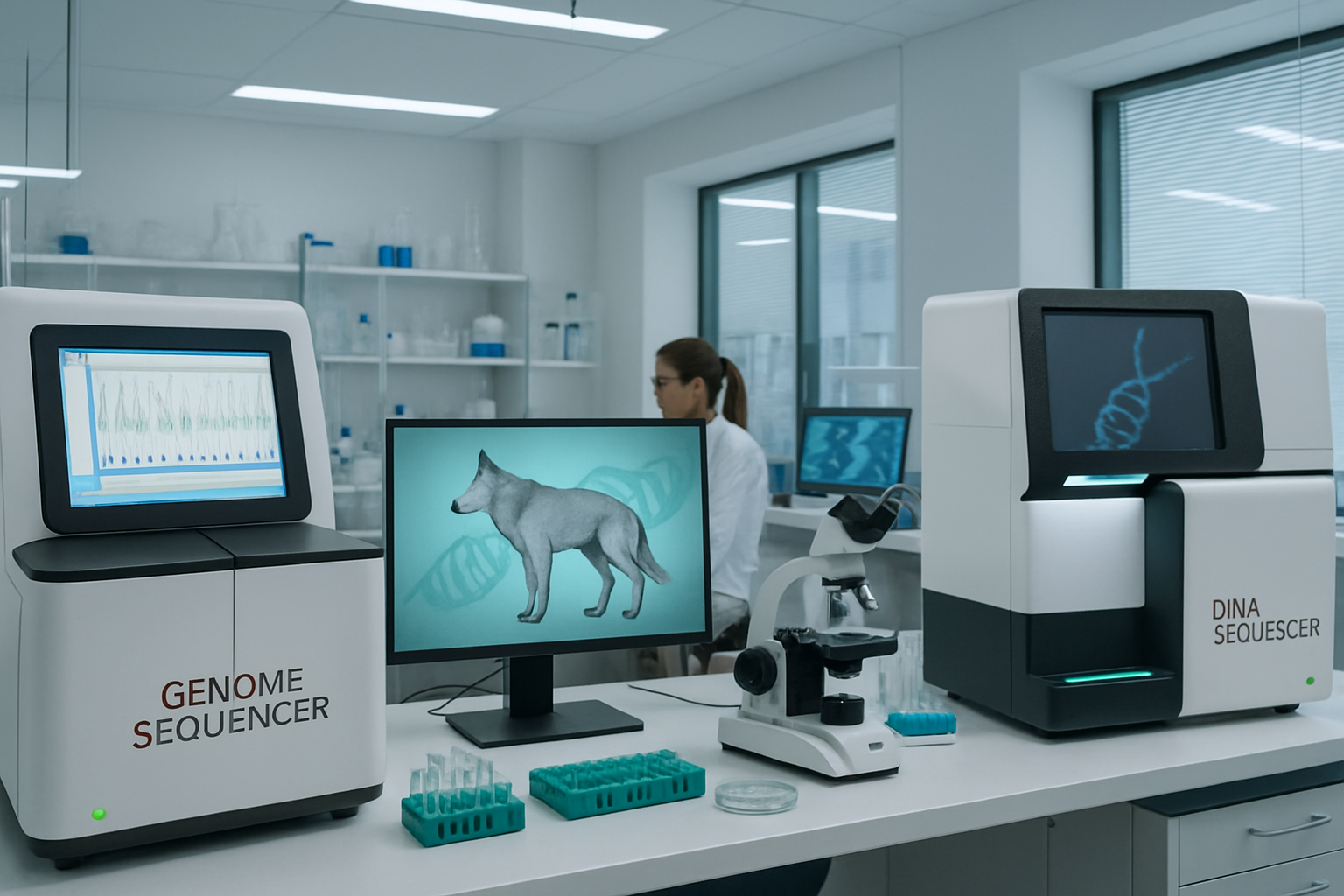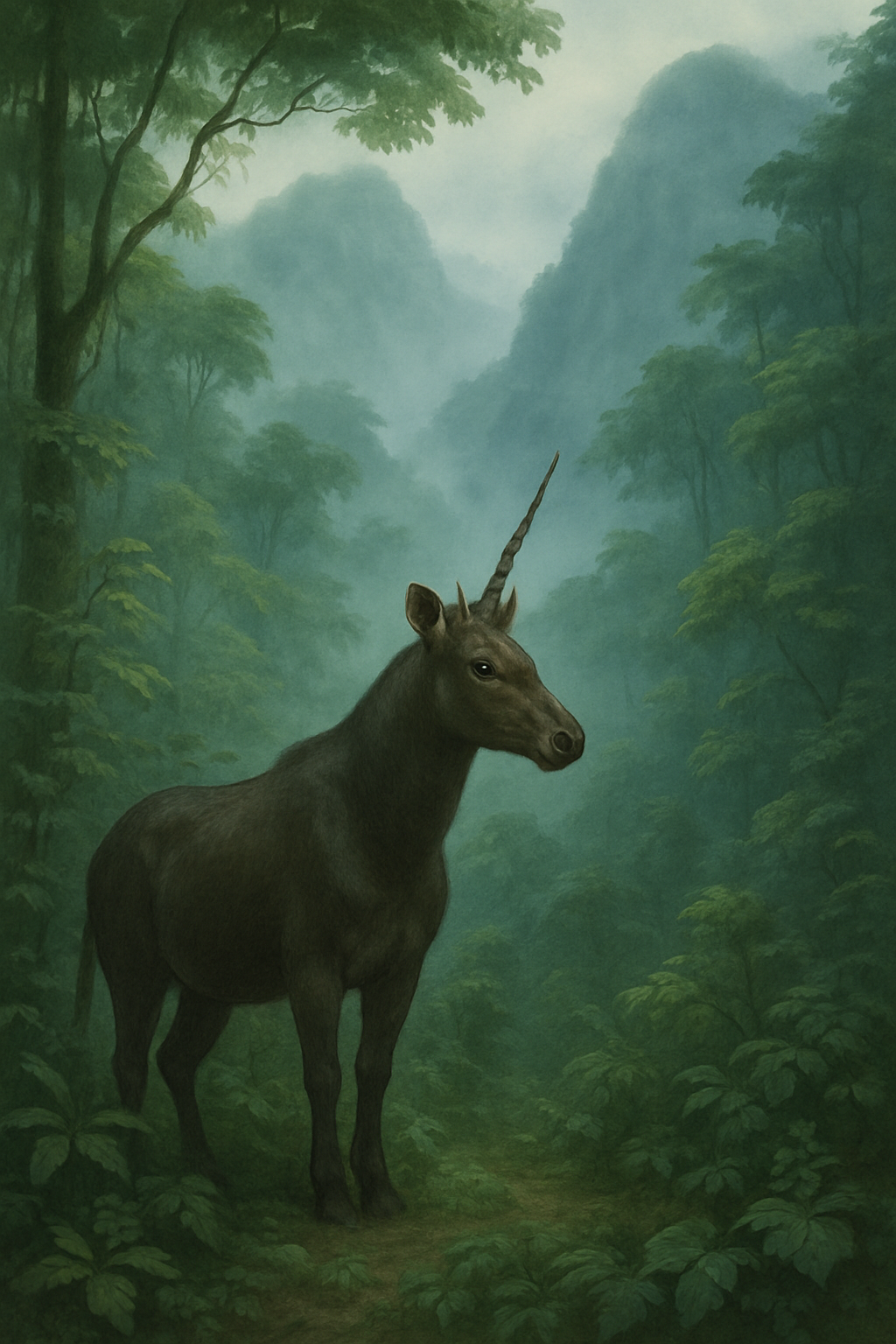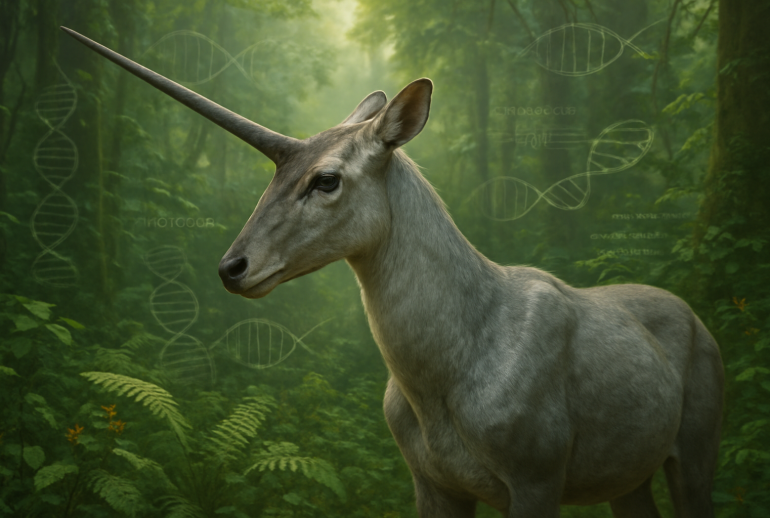The discovery and subsequent genome sequencing of the elusive saola, colloquially known as the “Asian unicorn,” represent a profound leap forward in wildlife genetics and conservation biology. Rarely glimpsed and found only deep within the Annamite Mountains along the Vietnam-Laos border, this mysterious creature has puzzled scientists since its discovery in 1992. Over three decades later, the first complete genome mapping achieved in 2025 using cutting-edge technologies from leaders such as Illumina, Thermo Fisher Scientific, and Pacific Biosciences illuminates not only the saola’s unique evolutionary heritage but also opens new pathways for preserving endangered species globally.
This rare antelope-like mammal has remained largely unobserved in its natural habitat since 2013, sparking concerns about its possible extinction. However, thanks to advances spearheaded by genomic firms including BGI, Roche, and Oxford Nanopore, scientists have been able to extract and sequence DNA from preserved tissue samples, producing an unprecedented genetic blueprint. This breakthrough is pivotal, enabling experts to understand the saola’s genetics at a granular level, which is essential for making informed in-situ and ex-situ conservation efforts.
Moreover, the genome sequencing offers potential for advancing biotechnology and personalized medicine through partnerships with companies like GeneDx, andMe, and Myriad Genetics, whose expertise in genomics is critical in translating raw genetic data into actionable insights. This article explores the techniques employed in the genome sequencing, the biological and conservation significance, as well as the broader implications for biodiversity and human health applications.
The Cutting-Edge Technologies Behind Sequencing the Asian Unicorn Genome
The mapping of the saola genome is a testament to the evolution of genome sequencing technologies over recent years. Unlike earlier sequencing efforts fraught with errors and gaps, the latest project utilized a multifaceted approach combining platforms from major industry players like Illumina, Thermo Fisher Scientific, and Oxford Nanopore, ensuring high fidelity and completeness of the assembled genome.
Key to this success was the integration of different sequencing methods:
- Short-read sequencing: Illumina’s high-throughput sequencers delivered vast quantities of short DNA fragments, characteristically accurate but limited in resolving repetitive regions.
- Long-read sequencing: Pacific Biosciences and Oxford Nanopore platforms contributed with their ability to read much longer DNA strands, which helps span complex genomic regions and structural variations.
- Hybrid Assembly: Combining both data types allowed bioinformatics experts to create an accurate and contiguous genome assembly, resolving ambiguities that one method alone could not.
- Validation and Annotation: Roche’s advanced genomic software and BGI’s annotation pipelines were used to identify gene functions, regulatory elements, and evolutionary markers in the saola’s genome.
Such a carefully calibrated collaboration between the sequencing giants and biotechnology firms ensured that the data’s quality surpassed previous attempts, fostering confidence in downstream conservation applications. This achievement also highlights how commercially available technologies have matured to support biodiversity genomics.
| Sequencing Technology | Company | Strengths | Limitations |
|---|---|---|---|
| Short-read Sequencing | Illumina | High accuracy, rapid throughput | Difficulty in repetitive regions |
| Long-read Sequencing | Pacific Biosciences | Long contiguous reads, resolves structural variants | Error rates higher than short reads |
| Real-time Nanopore Sequencing | Oxford Nanopore | Portability, long reads, direct RNA sequencing | Lower accuracy, requires intensive bioinformatics |
| Genome Annotation & Analysis | BGI, Roche | Comprehensive annotation, functional insights | Dependent on database completeness |
This genome sequencing represents not only a technical feat but also a model for future endangered species studies. It paves the way for new conservation strategies grounded in precise genetic understanding, which can be a game changer in protecting rare species from extinction.

Ecological and Conservation Implications of Saola’s Genome Data
The availability of the saola’s genome dramatically transforms conservation biology from guesswork to a science driven by genetic evidence. The “Asian unicorn” has swiftly transitioned into a critical subject for conservationists, due to its extremely limited population – fewer than 100 individuals are estimated to remain in fragmented habitats.
Decoding its genome has enabled scientists to:
- Assess genetic diversity: Understanding the genetic variability within the diminished population is crucial to predict its resilience to diseases and environmental changes.
- Identify breeding patterns: Genome data can help infer kinship and mating strategies to avoid inbreeding depression.
- Inform habitat restoration: Genetic markers assist in pinpointing optimal habitats and migration corridors to sustain viable populations.
- Guide captive breeding programs: Ex-situ conservation efforts can leverage genome data to maintain genetic health and prepare for potential reintroductions.
- Monitor poaching impact: Genomic tools allow for tracking population declines and forensic analysis to deter illegal wildlife trade.
These insights equip conservation agencies and governments in Southeast Asia with actionable data that helps prioritize conservation resources efficiently. The following table summarizes how genomic data interlinks with key conservation strategies:
| Conservation Aspect | Role of Genomic Data | Expected Outcome |
|---|---|---|
| Population Health Monitoring | Measure genetic diversity and identify deleterious alleles | Improved population viability estimates |
| Breeding Programs | Guided mate selection to prevent inbreeding | Healthier captive and wild populations |
| Habitat Management | Identify critical habitat for conservation prioritization | Protection of natural corridors and ecosystems |
| Poacher Deterrence | Use DNA evidence for law enforcement actions | Reduced illegal hunting and trafficking |
| Species Recovery | Develop precise reintroduction protocols based on genetics | Successful restoration of wild populations |
Experts from institutions working alongside Genentech have emphasized the genome’s role not only as a biological reference but as a symbol of hope for the saola’s persistence. Conservationists assert that with strategic interventions, it is still feasible to prevent the total disappearance of this enigmatic creature.
Bridging Biodiversity and Biotechnology: Broader Impacts of the Saola Genome Project
The implications of sequencing the saola genome extend well beyond conservation. This genomic data intersects with biotechnology, personalized medicine, and evolutionary science. Firms like GeneDx and Myriad Genetics see potential in the saola’s genome as a comparative model for studying genetic diseases and novel genes that could inspire therapeutic innovations.
In particular, lessons from the saola’s genetic adaptations may aid the development of:
- Adaptive resilience traits: Understanding how saola survive in specific environmental niches can inform genetic resilience research for crops, livestock, and even human health.
- Novel biochemical pathways: The genome might reveal unique proteins or enzymes useful for pharmaceuticals or industrial applications.
- Improved genetic diagnostics: Comparative genomics helps identify conserved gene markers useful for disease detection and prognosis.
- Evolutionary insights: The saola belongs to an unusual branch on the bovid family tree, and studying its genome could rewrite knowledge on mammalian evolutionary histories.
| Sector | Potential Contribution from Saola Genomics | Example Application |
|---|---|---|
| Medicine | Identification of novel genes related to immunity | Development of gene therapies and new vaccines |
| Biotechnology | Discovery of unique enzymes for biochemical processes | Green industrial catalysts and pharmaceutical synthesis |
| Agriculture | Genetic traits for environmental stress tolerance | Engineering crops resilient to climate change |
| Evolutionary Biology | Data for reconstructing evolutionary trees | Better understanding of mammalian ancestry |
This integration of wildlife genomics with human-centered sciences exemplifies the collaborative potential of modern genetics. It signals that preserving biodiversity yields returns far-reaching beyond the natural environment, including health and technological advancement.
Challenges in Applying Genomic Data to Conservation of Ultra-Rare Species
Despite the enormous promise of saola genome sequencing, practical obstacles remain formidable. The rarity and secretive nature of the species make collecting fresh biological samples nearly impossible without disrupting the small population. Conservationists thus depend heavily on historical samples, raising questions about the freshness and integrity of DNA.
Additionally, challenges include:
- Limited funding: Ultra-rare species often struggle to attract the consistent fiscal support required for long-term genomic work and conservation actions.
- Technological complexity: Advanced sequencing methods require continuous optimization and specialized expertise often scarce in biodiversity hotspots.
- Legal and logistical barriers: Cross-border collaborations between Vietnam and Laos encounter regulatory hurdles affecting sample sharing and joint conservation programs.
- Ecological unknowns: The saola’s ecological role and requirements are insufficiently understood, complicating habitat restoration and population management.
Addressing these challenges demands multi-stakeholder cooperation, involving governments, NGOs, local communities, and private sector allies like Roche and Thermo Fisher Scientific. Initiatives focusing on capacity building and technology transfer can empower regional scientists and conservationists.
| Challenge | Impact on Conservation | Potential Solutions |
|---|---|---|
| Sample Scarcity | Limits fresh genetic data acquisition | Use of preserved specimens and environmental DNA (eDNA) sampling |
| Funding Constraints | Delays projects and reduces field operations | Diversifying funding sources including private biotech partnerships |
| Cross-border Regulations | Slows collaborative research and conservation action | Develop multilateral agreements and joint management plans |
| Knowledge Gaps | Hinders suitable habitat management | Intensive ecological surveys and habitat modeling |
While the genome sequencing recapitalizes hope for the saola, the practical realization of its conservation requires overcoming these hurdles, underscoring that genomics is only one piece of a larger puzzle in preserving earth’s rarest mammals.

Global Conservation and Scientific Impact Following the Saola Genome Milestone
The achievement of sequencing the mysterious Asian unicorn’s genome not only elevates global attention on the saola but also exemplifies how genetic science can transform environmental stewardship worldwide. It provides a blueprint for tackling the conservation of other cryptic and ultra-rare species that previously eluded scientific scrutiny.
This milestone catalyzes:
- Heightened awareness: Media and policy focus on the saola creates momentum for broader biodiversity initiatives.
- International collaborations: Encourages partnerships among companies like Genentech, andMe, and Roche with academic institutions and governments.
- Innovation in conservation genomics: Drives research into improving sequencing methods and analytical tools tailored for endangered species.
- Policy integration: Supports the incorporation of genomic information into international treaties and conservation frameworks.
- Education and capacity building: Inspires a new generation of conservation geneticists and technicians in Asia and beyond.
| Impact Area | Description | Examples |
|---|---|---|
| Scientific Research | Creation of a comprehensive genetic database for ultra-rare mammals | Genome data accessible to researchers worldwide via open repositories |
| Conservation Practice | Incorporation of genetic data into management strategies | Genetic monitoring programs and evidence-based habitat protection |
| Public Engagement | Raising public awareness of biodiversity importance | Documentaries, social media campaigns, and educational curricula |
| Technological Development | Advancements in affordable, portable sequencing devices | Field deployable genomics platforms used in remote conservation sites |
| Policy Influence | Informed policymaking with genetic evidence | Inclusion of genomics in CITES and regional biodiversity agreements |
This genome sequencing breakthrough holds promise not just for the survival of the Asian unicorn, but also as a cornerstone for how humanity leverages biotechnology to secure a sustainable coexistence with Earth’s most vulnerable species.
Frequently Asked Questions about the Asian Unicorn Genome Sequencing
- What makes the saola’s genome unique?
The saola genome contains unique genetic markers reflective of its isolated evolutionary lineage within Bovidae, revealing distinct adaptations that differ significantly from related species. - How does genome sequencing aid conservation efforts?
Sequencing provides detailed genetic information that helps manage breeding, understand population health, and plan habitat protection for endangered species. - Which companies contributed to the genome sequencing?
Illumina, Thermo Fisher Scientific, Pacific Biosciences, BGI, Roche, Oxford Nanopore, GeneDx, and others played instrumental roles in sequencing, assembly, and analysis. - Is the saola confirmed to still exist in the wild?
Although no confirmed sightings have been recorded since 2013, conservationists hold hope aided by genomic tools and habitat restoration that the species still survives in small numbers. - Can the saola genome have applications beyond conservation?
Yes, the genome holds potential for advancements in medicine, biotechnology, and evolutionary research, underscoring the wider value of DNA from rare species.


